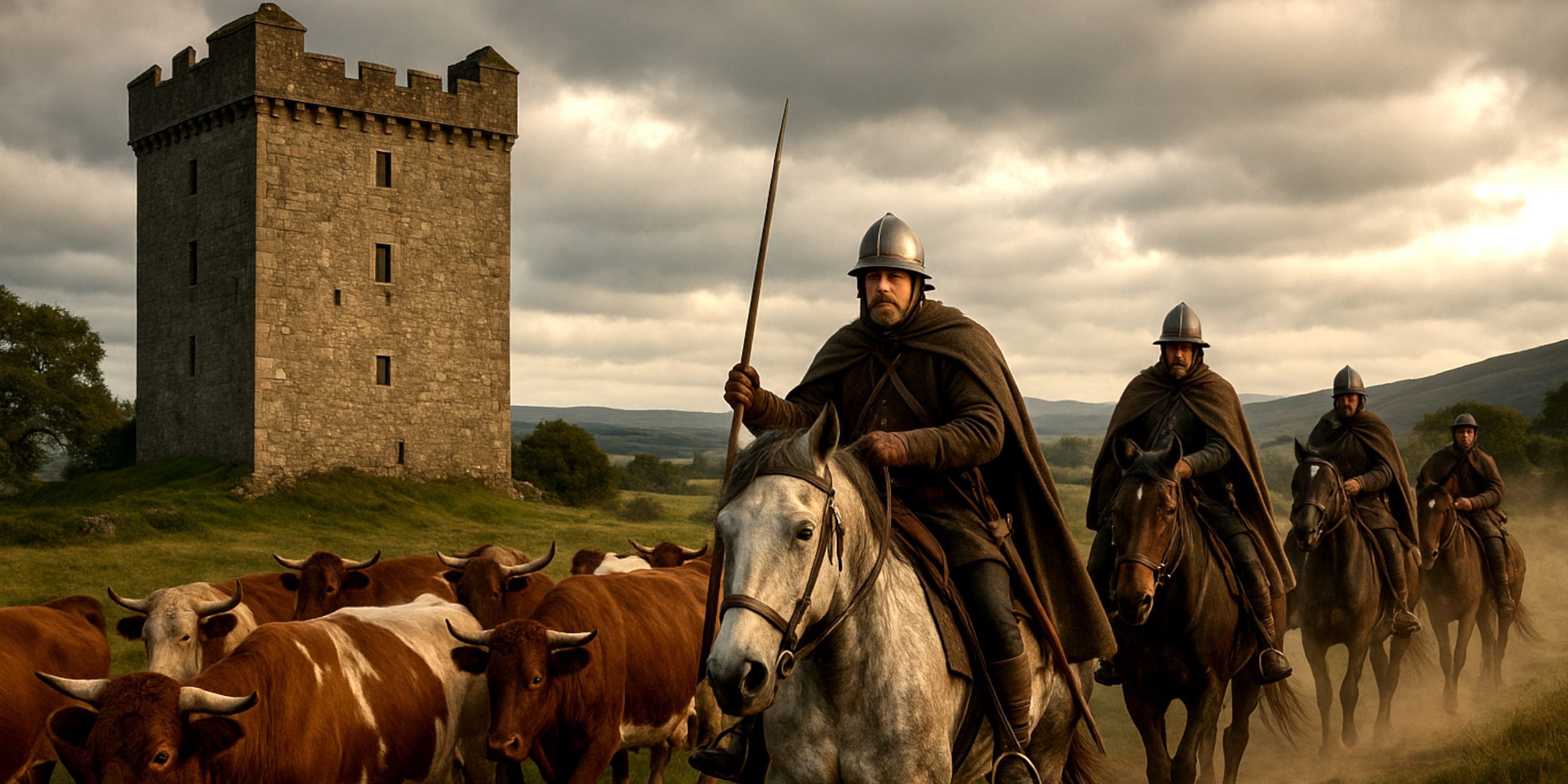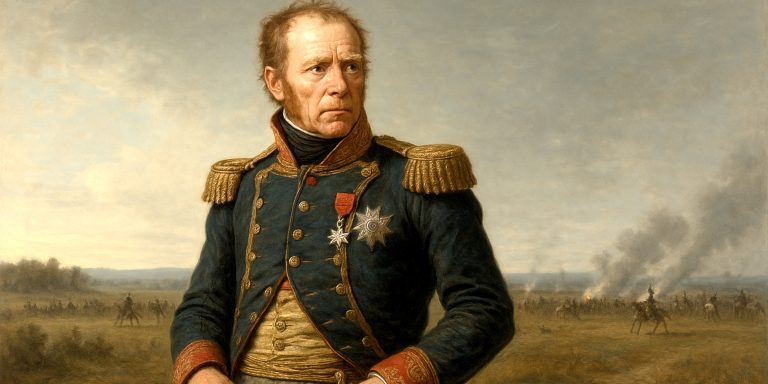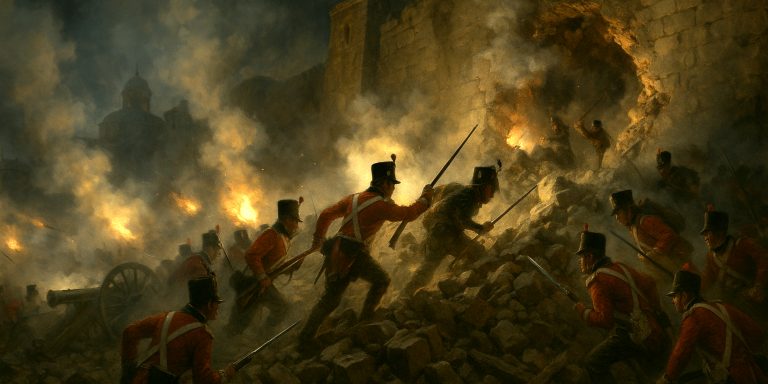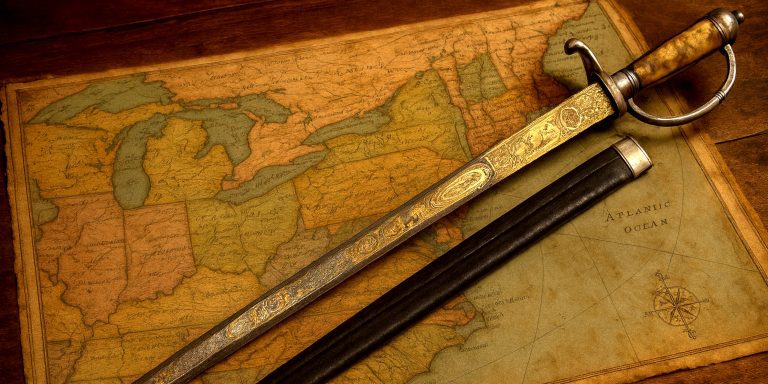
The Anglo-Scottish Border in the late medieval and early modern period was unlike anywhere else in Britain. From the late 13th century to the early 17th, this frontier region was home to the Border Reivers, families whose lives were shaped by persistent warfare, shifting loyalties, and a culture of raiding. Life here was neither fully English nor Scottish. It was defined instead by kinship, resilience, and survival in an unforgiving landscape.
A Region Caught Between Crowns

The Borderlands covered parts of Northumberland, Cumbria, the Scottish Borders, and Dumfries and Galloway. For over 300 years, this was a contested territory. Armies marched back and forth across it, castles rose and fell, and lawlessness often took root where royal authority was weakest.
After the Wars of Scottish Independence, both England and Scotland struggled to fully control the region. The frontier became a zone of unofficial truce and perpetual unrest. Neither side trusted the other, and both depended on local lords to maintain order. Many of these lords were themselves reivers or sympathised with them.
Everyday Survival and Raiding Culture
Life on the Borders was dominated by agriculture, but farming alone rarely sustained a household. The constant threat of war, harsh winters, and economic instability meant that theft and reiving became a way of life. Cattle and sheep were the main targets. A successful raid could bring food, wealth, and prestige to a family.
Reiving was not random thuggery. It followed its own code. Family loyalty mattered above all, and revenge was expected if wrongs were not righted. The feud system, based on blood and honour, held as much power as any legal statute. Livestock raids often involved swift night rides, knowledge of the terrain, and the use of pele towers for defence.
The Role of Pele Towers and Bastle Houses
Security shaped domestic architecture. Pele towers were fortified homes, built tall with thick stone walls and narrow slits for defence. Bastle houses, common in rural areas, had livestock housed on the ground floor and the family above, accessible by ladder or removable steps.
These buildings reflected the insecurity of the time. They were not symbols of wealth or status but necessities for survival. When not defending their own, families would use the same tactical knowledge to attack rival clans or cross-border enemies.
Kinship and the Power of the Surnames
Names like Armstrong, Graham, Nixon, Elliot, and Scott became synonymous with reiving. Family identity meant everything. Allegiances to the Scottish or English crowns came second to loyalty to the surname. Marriages were often strategic, designed to forge temporary alliances and reduce bloodshed.
The surnames ruled over ‘marches’ rather than counties. Wardens of the March were supposed to uphold order but were often compromised, either due to kinship ties or self-interest. Justice was inconsistent and often left in the hands of local custom rather than royal courts.
Border Law and the Days of Truce
Despite the violence, there was a shared understanding of how conflict could be contained. ‘Days of Truce’ were arranged when both English and Scottish sides would meet, exchange prisoners, and settle disputes. These events were formal, even ceremonial, but did not guarantee peace.
The system of March law developed in this unique environment. It allowed for cross-border justice but was limited in reach. The strength of the law depended entirely on the strength of the local Warden and the cooperation of powerful families.
Religion, Superstition, and Custom
The Reiver region was religious in its own way, though far removed from the piety seen elsewhere. Churches existed, but ministers were often absent or powerless. Superstition and local folklore filled the gaps. Protective charms, omens, and old beliefs shaped decision-making as much as Christian teaching.
Ballads, oral history, and storytelling were central to cultural identity. Songs like “Kinmont Willie” celebrated outlaw heroes and condemned perceived injustice. These tales helped to preserve the memory of exploits and feuds across generations.
The End of the Reiver Age
The Union of the Crowns in 1603 changed everything. When James VI of Scotland became James I of England, he no longer had reason to tolerate cross-border raids. Determined to pacify the region, he launched a brutal crackdown. Executions, transportation, and the destruction of strongholds followed.
The Borders were renamed the ‘Middle Shires’ and brought under tighter control. Families were relocated, their names banned, and the old feuding culture dismantled. Within a generation, the way of life that had dominated for centuries was over.
Legacy of the Border Reivers
Though the Reiver era ended in the early 1600s, its legacy lingers. The surnames remain, often proudly worn by descendants across the UK and the wider world. The landscape still bears traces of ruined towers and earthworks. And in folklore, the Reivers are remembered as both heroes and outlaws, survivors in a world shaped by conflict.



